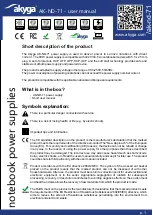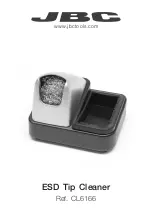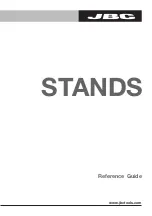
407170_ROGUE_RevA
MACHINE OPERATION
30
30
CONCRETE
WOOD
CONCRETE
WOOD
BLADES
■
Blade Setup
● Dull blades greatly affect the performance of the ma
-
chine and reduce cutting ability. Sharpen or replace as
needed.
● Depending on the material and sub-floor type, proper
blade size and placement will affect performance.
●
For harder jobs, use a smaller blade.
● Start with a narrow blade, then increase blade size to
optimize cutting pass. Narrower blades work easier than
wider blades, and usually clean the floor better. Wider is
not always better or faster.
●
Normally the bevel on the blade is down for wood, bevel
up for concrete.
● Blades can be offset in the blade holder for easier ac
-
cess to toe kicks or for removal along the wall.
■
Self-Scoring Blades
●
Self-scoring blades eliminate the need for pre-scoring
material and are designed for monolithic flooring, lami
-
nate, carpet and sheet materials. Depending upon the
type of material being removed and the sharpness of the
blade and scoring wings, the self-scoring blades may
make it harder to control the machine. Keep scoring
wings sharp at all times.
●
Sheet vinyl, solid vinyl, rubber tile and urethane need to
be scored for best results. NFE recommends using a
self-scoring blade.
Standard blade in blade holder, bevel down for wood.
Standard blade in blade holder, bevel up for concrete.
A
A
B
B
CONCRETE
WOOD
A
A
B
B
CONCRETE
WOOD
Bevel down self-scoring 90° blade
Bevel up self-scoring 90° blade
Scoring wings
Scoring wings
Bevel
down
Bevel down
Bevel up
Bevel up
















































